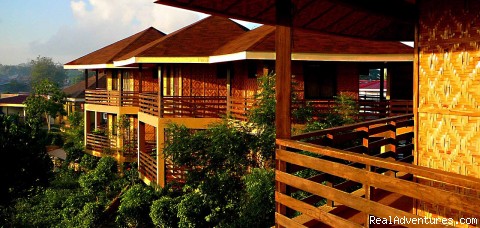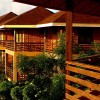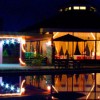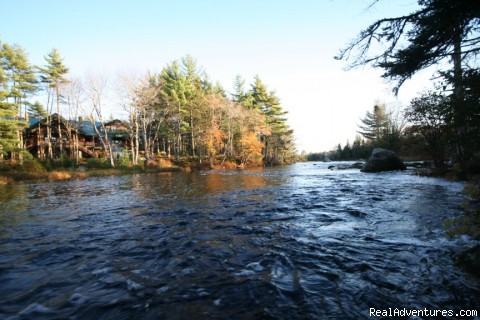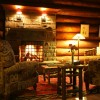Most visitors to St. Andrews Cathedral and Castle take interest in the hauntings believed to be present this historical site. Is it true that this is the most haunted town in Scotland? What were the spooky stories surrounding this town?
Most of St. Andrews ghosts were born of tragedy, and bad luck is said to come to those who see some of them.

 Ghostly animals
Ghostly animals
Close by the great ruined cathedral and the castle, a pig runs down the narrow road towards the sea. Should you happen to be walking down this path, you might see a pig who will turn and look at you, which will leave you sick and trembling. This pig has a man’s eyes full of a desperate sadness, guilt, and shame, begging for your understanding and compassion.
Another ghostly animal is of a little dog heard to patter over floors which are no longer there in an old house in North Street.
The Ghost of Piper Jock
To hear the wild skirling of the ghostly bagpipes of young Piper Jock down the West Cliffs, or to see him walk the cliffs where no mortal could, will bring you not good luck but rather the reverse.
It is told that a couple of centuries ago young Jock, for a bet, took his bagpipes for company and set out to explore the West Cliffs cave and the passages leading off it. It was a New Year’s night of sparkling frost and moonlight. He was never seen again. His widow died of a broken heart, and was afterwards seen haunting the cave entrance looking for her husband.
The Haunted West Cliff Cave
The West Cliff cave no longer exists today as a result of coastal erosion by the sea, and real estate developments during the Victorian times. But the cave did exist between the castle and the Witch Lake. It was remembered by the older folks at the turn of the century that this cave had an evil reputation. When the tide is full on the East Sands between midnight and the first hour of the morning, this is the best time to see the recklessly driven coach with its black horses, headless coachman and skeleton outriders, hurtling its way seawards. Those who have seen the coach speak of a white, terrified face staring out at them. This is Cardinal David Beaton, and beside him sits the Devil with its hand on the Cardinal’s arm for the Devil knows his own. The coach drives into the sea—and the Cardinal is carried off to hell. Many in Scotland during Beaton’s time who would have wished him such an end.
Cardinal Beaton’s Ghost
In St. Andrew’s castle, the cardinal, during his lifetime has been seen walking quietly, dignified, and clad in a red robe and biretta, obviously with much in mind, looking out to the sea. The castle has been his Episcopal palace, fortress, and state prison.
One university student once tried to climb into the castle after it was closed to the visitors. As he was climbing over the fence he had glanced up at the south –facing castle windows. A shadowy figure was clearly moving from window to window. He first thought it was the custodian. But he realized later that the figure was moving from window to window where there were no floors, nor had been any for centuries.
Sightings of the cardinal in the area of those windows have been recorded before, especially at the window from which, traditionally he watched the burning of the Reformer, George Wishart.
The White Lady
The White Lady is perhaps the best known of the St. Andrews ghosts. Gentle and beautiful, she had been sighted innumerable times in the neighborhood of the cathedral and castle. She has been variously described over the years by those who have seen her as “all in white—a rosary hanging by her side – carrying a book—young and beautiful—with long black hair—wearing long, white gloves—her face hidden—wearing a tall pointed, medieval type head-dress.” Always she floats and glides along
Ghost of James, Earl of Bothwell
James, Earl of the Bothwell, third husband of Mary, Queen of Scots, has been seen as a young man in the town. The young Bothwell did visit St. Andrews, and once was lodged in the castle under guard while his possible implication in a plot against Mary was investigated.
The Ghost of Thomas Plater
Perhaps the strangest tale of all describes the laying of one of the cathedral’s ghosts. In 1393 in St. Andrews Canon, Thomas Plater or Platter stabbed to death Prior Robert Montrose. Plater was condemned to solitary life imprisonment for his crime, but he died soon afterwards. His ghost was often seen last century, both by day and by night, in the cathedral he had known so well. In 1898, Plater appeared in a penitent’s robe in a ghostly vision to a fellow Catholic, a St. Andrews hotel worker. The ghost begged the man to arrange for his bones, disturbed during antiquarian diggings, to be buried in a consecrated ground with the full rights of his Church, so that he could be at last at eternal peace.
This was done in July 1898, and Thomas Plater’s bones, or at least those believed to be his, were interred as he wished, on the South Side of St. Rule’s Chapel. Plater seems to have ceased his ghostly wanderings of five hundred years from July 1898, and the cathedral knew his ghost no more.
Those seriously interested in the spirit world believe that many ghosts are spirits bound to our earth by emotions such as love, hate, guilt, or unresolved earthly problems, and such spirits materialize in their earthly haunts.
-----------------



